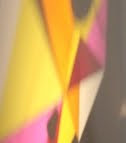build it yourself
what's interesting about mari's project (which began in 1974) is that the ideas behind the furniture and the overall project is not only one of building cheap furniture. here is a short text (uncredited in the catalog) regarding the english translation of the title:
"it is not easy to translate into english the italian word 'autoprogettazione'. the italian word literally means auto = self, and autoprogettazione = design. but the term 'sefl-design' is misleading since the word 'design', to the general public, now signifies a series of superficially decorative objects. by the word autoprogettazione mari means an exercise to be carried out individually to to improve one's personal understanding of the sincerity behind the project. to make this possible you are guided through an archetypal and very simple technique. therefore the end product, although usable, is only important because of its educational value"
it's interesting how this paragraph was translated into english, as it seems as if the most important sentences (the last three) don't really express what mari seems to be trying to say, with a phrase such as 'educational value', i believe mari is speaking less about education in terms of becoming a better carpenter or builder; and more in relation to what one might learn, both about themselves and the objects they make. similarly, the word 'value' can be interpreted in numerous ways: first, obviously, that making furniture of cheap materials has value in that it is inexpensive and very useful. second, that self-made (or hand-made) objects, as opposed to manufactured objects, offer a deeper connection to one's environment. third, that the experience of making a piece of furniture creates an intimacy, rather than a distance.
so, when mari rejects the idea of 'design' as it is in culture, he is criticizing the level of detachment of factory made products. and when he uses the terms 'to understand the sincerity behind the project' he is not only talking about the importance of the experience of the process of making, but about how the creation of things in one's home not only changes one's visual environment, but one's relationship to it.
mari's text doesn't mention painting the planks, nor painting the finished piece of furniture, but when i happened upon this image, i began to think about how one claims an object...



0 Comments:
Post a Comment
<< Home